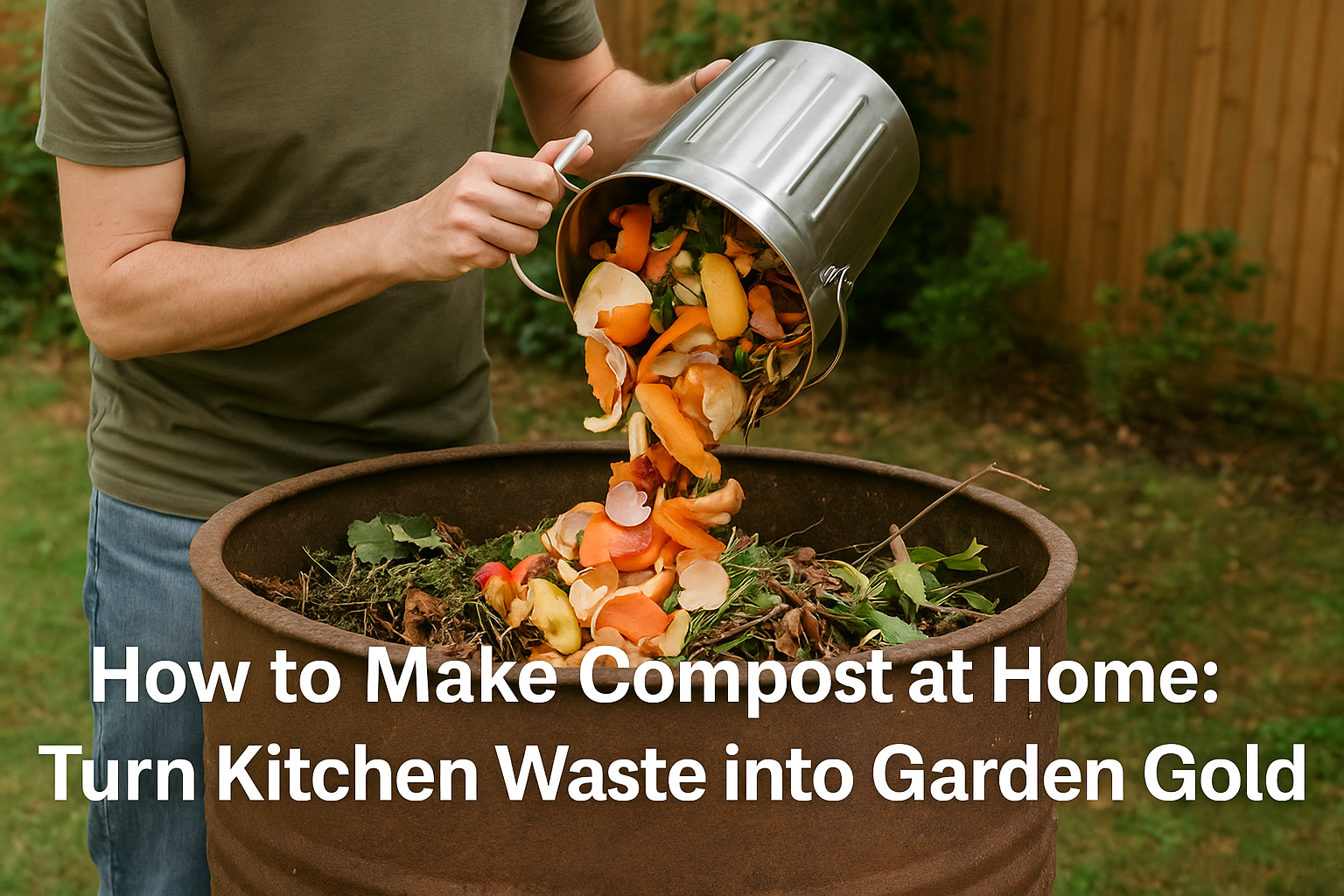Compost is often called “black gold” by gardeners—and for good reason. It enriches soil, helps plants grow stronger, and reduces the need for chemical fertilizers. Best of all? You can make it yourself using everyday kitchen and garden waste. This guide will show you exactly how to start composting at home, even in small spaces.
Why Compost?
Composting transforms organic waste into nutrient-rich soil. The benefits include:
- Enriches soil with essential nutrients
- Improves moisture retention and soil structure
- Reduces landfill waste and greenhouse gases
- Saves money on fertilizers
- Promotes beneficial microorganisms and worms
It’s one of the most sustainable things you can do in your garden.
What Can You Compost?
Greens (Nitrogen-rich):
- Fruit and vegetable scraps
- Coffee grounds and tea bags
- Fresh grass clippings
- Plant trimmings
- Crushed eggshells
Browns (Carbon-rich):
- Dry leaves and twigs
- Shredded newspaper or cardboard
- Sawdust and wood chips
- Paper towels and napkins (unbleached)
- Straw or hay
Aim for a balance of roughly 2 parts browns to 1 part greens for best results.
What Not to Compost
- Meat, bones, or dairy products
- Greasy or oily food
- Diseased plants
- Pet waste (cat/dog feces)
- Glossy or colored paper
- Synthetic materials or plastic
These items can attract pests or slow down the composting process.
Choosing a Composting Method
Outdoor Compost Bin or Pile
- Great for large yards
- Build with pallets, wire mesh, or buy a tumbler
- Turn weekly to aerate
Indoor Compost Bin
- Compact bins for small apartments
- Use bokashi or worm composting systems
- Odor-free if done correctly
Vermicomposting (with Worms)
- Red wigglers break down organic matter quickly
- Great for indoors or under sinks
- Produces rich worm castings and compost tea
Choose a system based on your space, lifestyle, and volume of waste.
How to Start a Compost Pile
- Choose your location: shady, well-drained area outdoors or a spot indoors
- Create a base layer: use dry leaves or shredded cardboard
- Alternate layers: add greens and browns in layers
- Keep it moist: like a damp sponge—not soaked
- Turn regularly: mix materials weekly to speed up breakdown
- Wait and observe: compost should be ready in 2–3 months, dark and crumbly with an earthy smell
Cover your pile to retain moisture and keep pests out.
Composting in Small Spaces
- Use a bokashi bin for fermented composting
- Try a kitchen compost pail with a charcoal filter
- Use a compact tumbling bin on balconies or patios
- Collect scraps and drop them at a community compost site
City dwellers can still compost creatively and effectively.
Using Your Finished Compost
- Mix into potting soil for houseplants
- Top-dress garden beds with a thin layer
- Feed container plants monthly
- Add to raised beds before planting
- Use as a seed-starting medium when well-sifted
Compost is the most natural, effective way to nourish your plants.
Final Thoughts: Waste Less, Grow More
Composting is simple, impactful, and incredibly rewarding. Whether you live in a studio apartment or a farmhouse, there’s a composting method for you. Turn your scraps into soil—and your garden will thank you.

